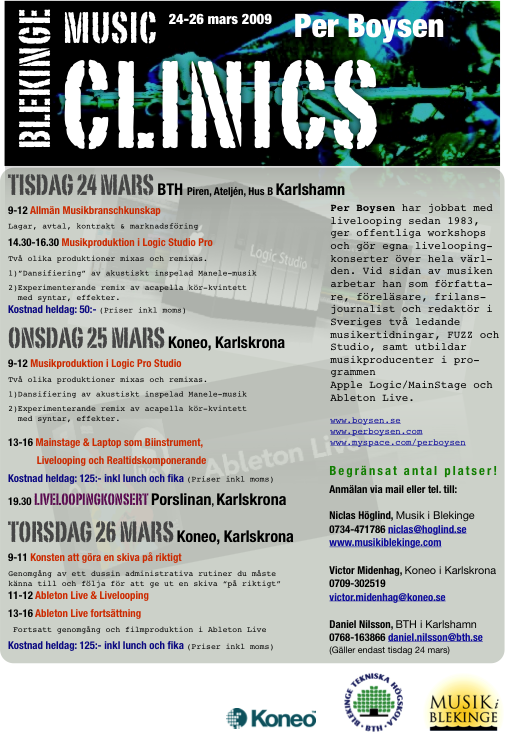Sometimes I get hired to play a solo concert with my Chapman Stick. As my showcase, I had this 40-minute video filmed during one such tour. I often g[……]
Live Stick video Y2KX+1 Festival, CA, USA
A rough clip from my Oct 16 2011 concert at Santa Cruz International Live Looping Festival. Starting out with a basic sound-check I kept on improvising to make up a 9:00 minutes piece of music. SG12 Stick Guitar with Roland GR55 synth and my home-built “meta instrument” of interactive electronics. [……]
Unexpected – improvisational live album released!
 This album is a live recording of a musical duo improvisation session that took place in Rome on June 5 2009. Fabio Anile plays the Piano and the Synt[……]
This album is a live recording of a musical duo improvisation session that took place in Rome on June 5 2009. Fabio Anile plays the Piano and the Synt[……]
Improvisation is not free!
The better you become at “improvising” the more you realize there is no such thing as “free improvisation”. Since music is a form of communication the[……]
Florence Live Looping jam # 1+2+3
This is the first improvised session, from the “Anteprima” of the “First International Live Looping Festival – in Rome”, that took place on the 6th ju[……]
“First Meeting” trio concert downloads

One night in Mars 2009 I met up with these two guys to play a completely improvised concert together. They had been playing together before, but not[……]
Blekinge Music Clinics Mars 24-26 with Per Boysen
Clinics hold in Swedish – concerts in Bb. Pre booking, please see poster below:
 [……]
[……]
What is Livelooping?
Livelooping is enormously fun – You can do it too!
Livelooping is about creating, juggling with and reworking loops to create complex music on-the-fl[……]